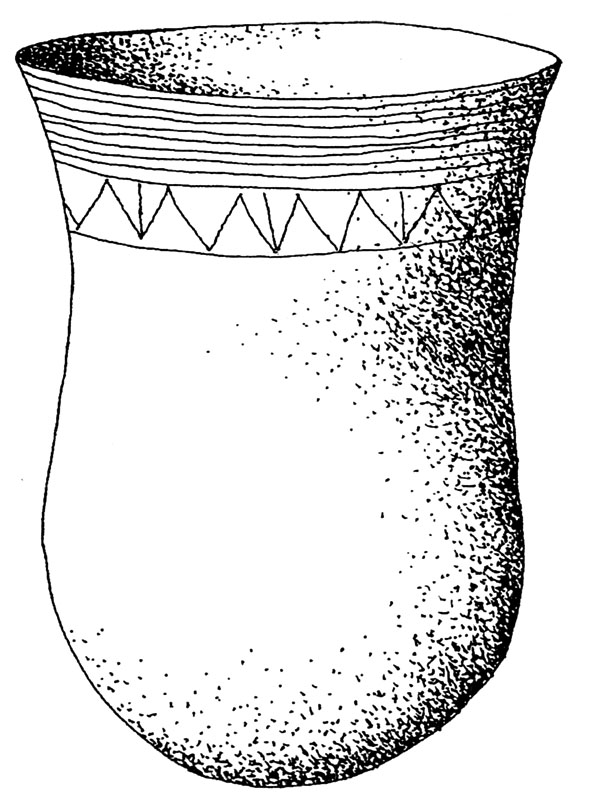Bendewald Point

The “Bendewald Point" motif is similar to the “Ayres Point" motif save that the pendant triangles are open rather than filled with incised lines. Sometimes there is a single horizontal zoning line present beneath the triangles, and on a few occasions there are single vertical lines within alternating pendant triangles.
One partially reconstructed vessel from Guadalupe Bay exhibits the “Bendewald Point" motif. It is the most impressive ceramic item recovered during the excavations at the site. The vessel is made up of nine nondecorated body sherds, two rim sherds exhibiting only horizontal lines, and six sherds with both horizontal lines and the pendant triangles (three of which are rims). All of those with incisions were classified as Rockport Incised, var. Mustang Lake, while the nondecorated body sherds originally were classed as Rockport Plain, var. Austwell. Taken together, the decorative field is quite broad, and covers the upper 40 mm of the vessel. There are nine horizontal lines that occupy the top 27 mm of the field, plus a zoned area of pendant triangles that extends down from the lowest horizontal line for an additional 13 mm.
The “Bendewald Point" motif has been documented in only one other study from the coastal bend region. However, “Bendewald Point” and/or very similar motifs appear, to a limited extent, on Goose Creek and San Jacinto Incised sherds from the upper Texas coast. Similar motifs also are common, either as triangular punctations or incised triangles, on several ceramic types typical of the Coles Creek and early Plaquemine cultures in Louisiana and the Lower Mississippi Valley, particularly Coles Creek Incised, Mazique Incised, and Plaquemine Brushed. Considering all of this, it is likely that the Guadalupe Bay site is located either at or very near the southern edge of the overall distribution of the “Bendewald Point" motif. The motif’s major area of distribution appears to be situated farther up the Texas coast and on into southwest coastal Louisiana.